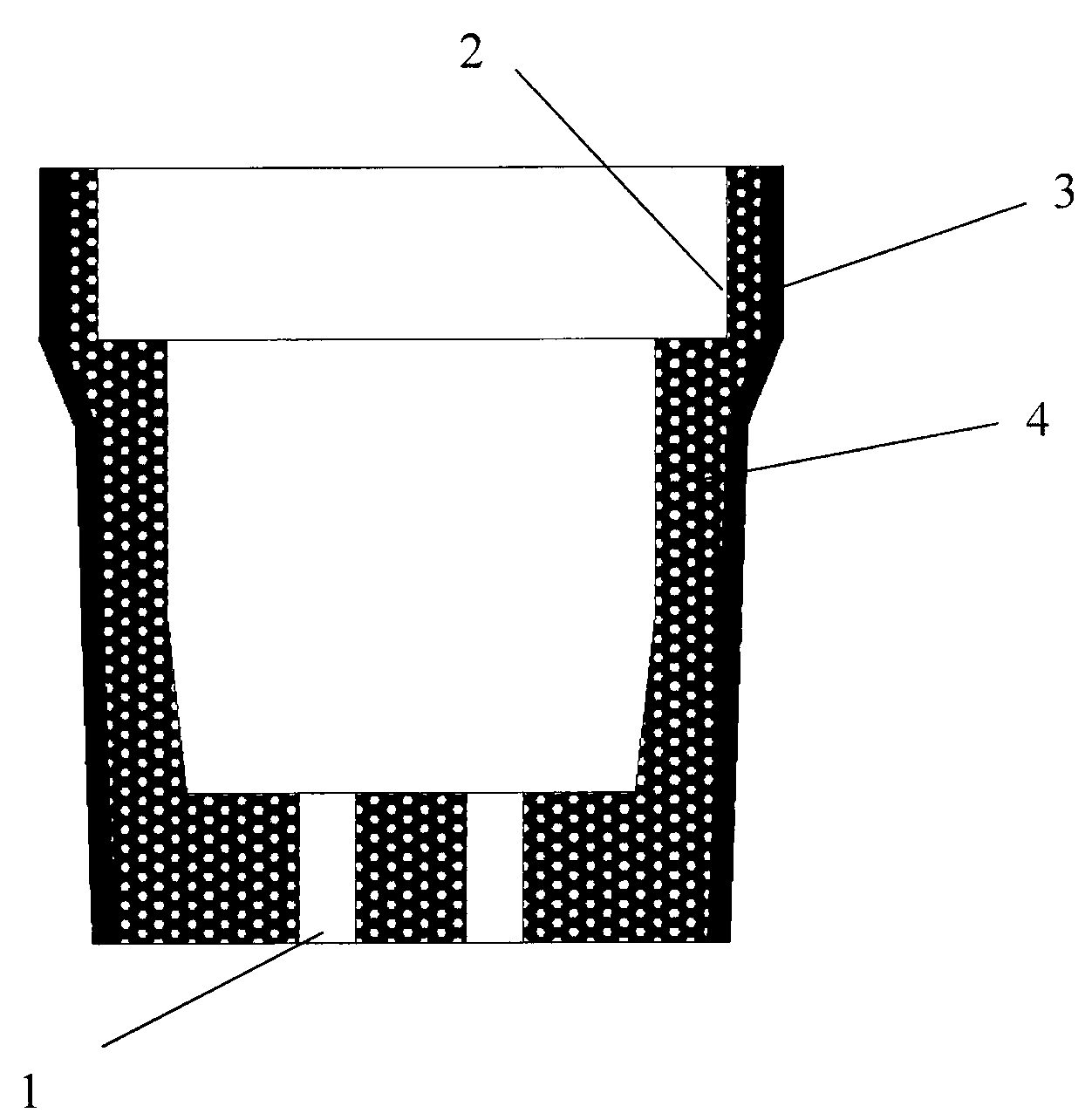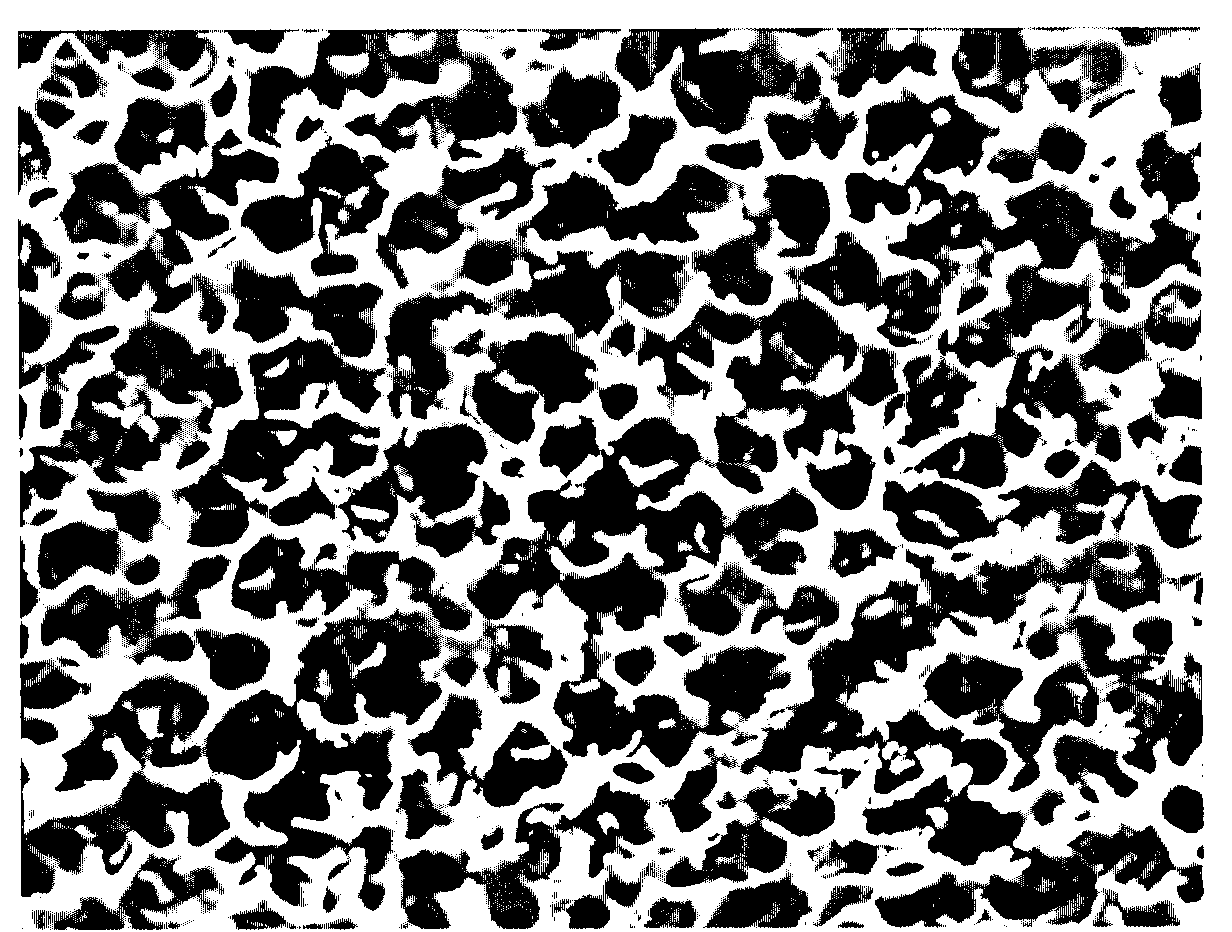Porous ceramic lamp holder and preparation method thereof
A technology of porous ceramics and ceramic lamp sockets, applied in incandescent lamps, discharge lamps, incandescent lamp parts, etc., to achieve the effect of reducing production costs, good thermal barrier performance, and reducing heat conduction
- Summary
- Abstract
- Description
- Claims
- Application Information
AI Technical Summary
Problems solved by technology
Method used
Image
Examples
Embodiment 1
[0039] The pore diameter of the soft polyurethane sponge used to make the ceramic core is controlled between 0.5 and 3.5 mm, and a core corresponding to the size of the lamp base is made according to the ceramic sintering shrinkage rate of the lamp base. Preparation of 400nm grade Al 2 o 3 Powder 70%, Kaolin 10%, Clay 10%, Talc 2%, CaCO 3 2%, bentonite 2% (rheological agent), 100 parts of ceramic mixed raw materials of natural magnesite 4%, then add 0.2 parts of polyethylene glycol (PEG) dispersant in ceramic mixed raw materials, 30 parts of water In the ball mill tank, the planetary mechanical ball mill was used to fully mix the materials to prepare a slurry, and the ball milled at a speed of 240 rpm for 60 minutes, and the viscosity of the prepared slurry was controlled at 3Pa.S.
[0040] The core made of soft polyurethane sponge is subjected to the aforementioned primary slurrying and secondary slurrying, and then centrifuged at a speed of 2000r / min for 90s, and then dri...
Embodiment 2
[0042] The pore diameter of the soft polyurethane sponge used to make the ceramic core is controlled between 0.5 and 3.5 mm, and a core corresponding to the size of the lamp base is made according to the ceramic sintering shrinkage rate of the lamp base. Preparation of 3000nm grade Al 2 o 3 Powder 35%, Kaolin 20%, Clay 20%, Talc 5%, CaCO 3 3%, bentonite 7% (rheological agent), 100 parts of ceramic mixed raw materials of natural magnesite 10%, then add 1 part of polyethylene glycol (PEG) dispersant, 0.5 part of polyethylene Alcohol binder, 0.5 parts of oleic acid and 40 parts of water are placed in a ball mill tank, and a planetary mechanical ball mill is used to fully mix the materials to prepare a slurry, and ball mill at a speed of 240 rpm for 80 minutes. The viscosity of the prepared slurry is controlled at 5Pa.S.
[0043] The core made of soft polyurethane sponge is subjected to the aforementioned primary slurrying and secondary slurrying, and then centrifuged at a spe...
Embodiment 3
[0045] The pore diameter of the soft polyurethane sponge used to make the ceramic core is controlled between 0.5 and 3.5 mm, and a core corresponding to the size of the lamp base is made according to the ceramic sintering shrinkage rate of the lamp base. Preparation of 5000nm grade Al 2 o 3 Powder 53%, Kaolin 15%, Clay 15%, Talc 3%, CaCO 3 3%, bentonite 4% (rheological agent), 100 parts of ceramic mixed raw materials of natural magnesite 7%, then add 0.5 parts of polyethylene glycol (PEG) dispersant, 0.2 parts of polyethylene Alcohol binder, 0.3 parts of stearic acid surfactant and 35 parts of water are placed in a ball mill tank, and the planetary mechanical ball mill is used to fully mix the materials to prepare a slurry, and ball mill at a speed of 240 rpm for 90 minutes. The prepared slurry Material viscosity is controlled at 4Pa.S.
[0046] The core made of soft polyurethane sponge is subjected to the aforementioned primary slurrying and secondary slurrying, and then ...
PUM
| Property | Measurement | Unit |
|---|---|---|
| pore size | aaaaa | aaaaa |
| thickness | aaaaa | aaaaa |
| pore size | aaaaa | aaaaa |
Abstract
Description
Claims
Application Information
 Login to View More
Login to View More - R&D
- Intellectual Property
- Life Sciences
- Materials
- Tech Scout
- Unparalleled Data Quality
- Higher Quality Content
- 60% Fewer Hallucinations
Browse by: Latest US Patents, China's latest patents, Technical Efficacy Thesaurus, Application Domain, Technology Topic, Popular Technical Reports.
© 2025 PatSnap. All rights reserved.Legal|Privacy policy|Modern Slavery Act Transparency Statement|Sitemap|About US| Contact US: help@patsnap.com



